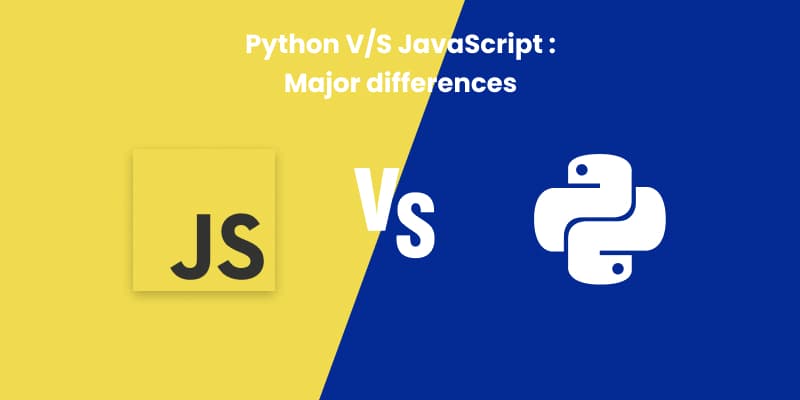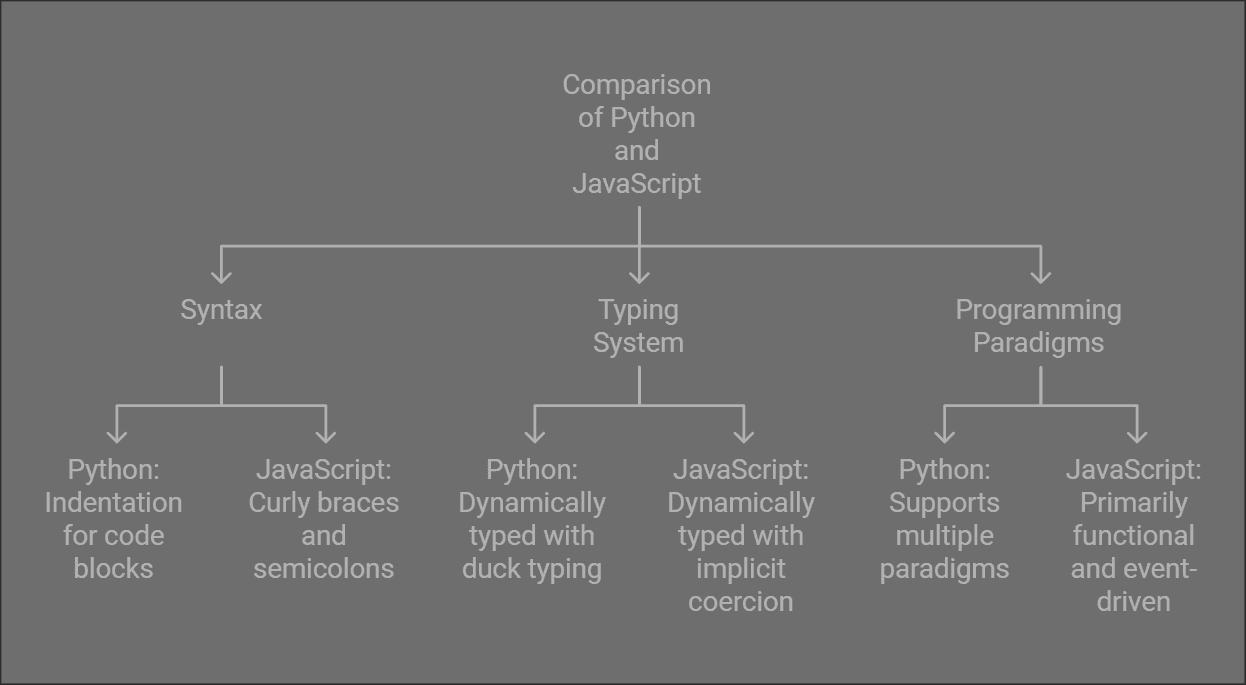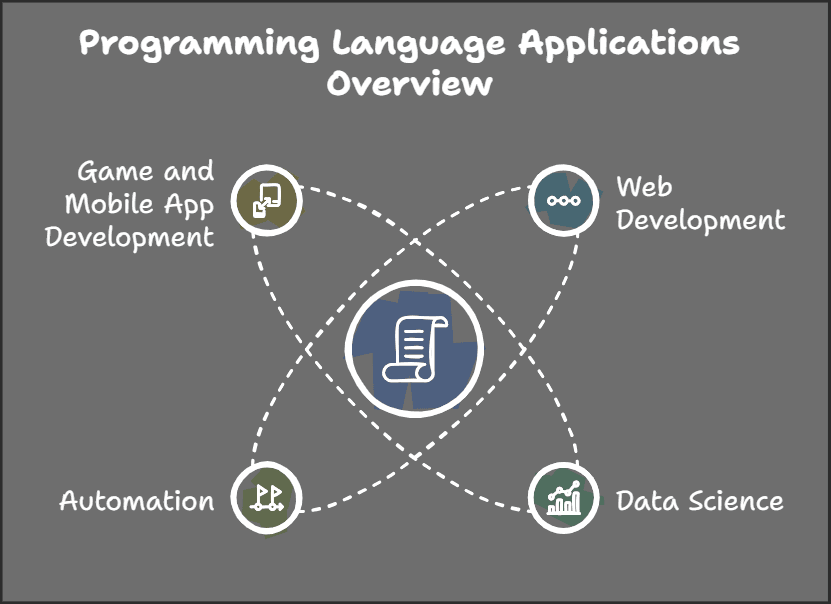Python V/S JavaScript: Major differences

Introduction
In the ever-evolving realm of programming languages, Python and JavaScript stand as two of the most prominent and versatile languages used by developers worldwide.
Python, known for its simplicity and readability, is widely celebrated for its applications in data science, machine learning, and automation.
On the other hand, JavaScript reigns supreme in the world of web development, enabling dynamic and interactive user experiences on the front-end, while also expanding its reach to back-end development with technologies like Node.js.
This comparison aims to delve into the core differences between Python and JavaScript, exploring their unique features, use cases, and the strengths and challenges each language presents to the modern developer.
Background Information
Python: Created by Guido van Rossum and first released in 1991, Python emphasizes readability and simplicity. It's popular in data science, machine learning, and automation, thanks to its rich libraries like Pandas and TensorFlow.
JavaScript: Developed by Brendan Eich and released in 1995, JavaScript started as a tool to enhance web page interactivity. It has since expanded to include server-side development with Node.js, making it essential for both front-end and back-end applications.
Both languages have evolved significantly, driven by active developer communities and continuous improvements. Their ecosystems are vital to modern software development.
Core Concepts

Syntax:
Python: Known for its clean, readable, and easy-to-understand syntax, resembling plain English. Uses indentation to define code blocks, which enhances readability.
JavaScript: Utilizes curly braces
{}to define code blocks and semicolons;to end statements. It's more verbose and complex compared to Python.
Typing System:
Python: Dynamically typed, meaning variable types are determined at runtime. Supports duck typing, where the type is inferred based on how it is used.
JavaScript: Also dynamically typed. Variables can change types, but it can lead to unexpected behaviors due to implicit type coercion.
Paradigms:
Python: Supports multiple programming paradigms, including procedural, object-oriented, and functional programming.
JavaScript: Primarily used for functional and event-driven programming but also supports object-oriented and procedural paradigms.
Applications

Web Development:
Python: Often used for back-end development with frameworks like Django and Flask.
JavaScript: Dominates front-end development with libraries like React, Angular, and Vue. Also used in back-end development with Node.js.
Data Science:
Python: Highly preferred for data analysis, visualization, and machine learning. Key libraries include Pandas, NumPy, Matplotlib, and TensorFlow.
JavaScript: Less common in data science but used in some data visualization libraries like D3.js.
Automation:
Python: Widely used for scripting and automation tasks due to its simplicity and readability.
JavaScript: Can be used for automation in web applications and with tools like Puppeteer.
Game and Mobile App Development:
Python: Used in game development with libraries like Pygame. Limited presence in mobile app development.
JavaScript: Popular in game development with engines like Phaser. Widely used in mobile app development with frameworks like React Native and Ionic.
Benefits and Drawbacks
Strengths and Weaknesses:
Python:
Strengths:
Easy to learn and use due to its readable syntax.
Extensive libraries and frameworks, especially for data science and machine learning.
Strong community support and abundant resources.
Weaknesses:
Slower execution speed compared to some languages due to its interpreted nature.
Not ideal for mobile app development.
Global Interpreter Lock (GIL) limits multithreading performance.
JavaScript:
Strengths:
Ubiquitous in web development, both front-end and back-end.
Asynchronous programming capabilities with event-driven architecture.
Large ecosystem and numerous frameworks.
Weaknesses:
Can be challenging to learn due to quirks and intricacies in the language.
Lack of type safety can lead to runtime errors.
Browser compatibility issues can arise.
Performance and Scalability:
Python:
Performance:
Generally slower execution due to its interpreted nature.
Performance can be enhanced with tools like PyPy or by integrating C/C++.
Scalability:
Suitable for scalable applications with frameworks like Django.
GIL can be a bottleneck for CPU-bound tasks, but this can be mitigated with multiprocessing.
JavaScript:
Performance:
Fast execution speed with modern JavaScript engines (e.g., V8).
Efficient in handling I/O operations due to its non-blocking, asynchronous nature.
Scalability:
Highly scalable for web applications with Node.js.
Event-driven architecture supports high concurrency.
Best Practices
Coding Standards:
Consistency: Follow a consistent coding style to enhance readability and maintainability. Use style guides like PEP 8 for Python and Airbnb's JavaScript Style Guide.
Meaningful Names: Use descriptive and meaningful variable, function, and class names.
Comments and Documentation: Write clear comments and maintain thorough documentation to explain the purpose and logic of your code.
Version Control: Use version control systems like Git to track changes and collaborate efficiently.
Linting: Use linters (e.g., pylint for Python, ESLint for JavaScript) to catch coding issues early.
Debugging Techniques:
Print Statements: Use print statements or console logs to understand the flow of your code and values of variables.
Debugging Tools: Utilize built-in debuggers (e.g., pdb for Python, Chrome DevTools for JavaScript) to set breakpoints and inspect variables.
Error Handling: Implement robust error handling with try-except blocks in Python and try-catch in JavaScript.
Testing: Write unit tests and integration tests to catch issues early and ensure code reliability.
Code Reviews: Participate in code reviews to identify potential issues and improve code quality through peer feedback.
Additional Best Practices:
Modular Design: Break down your code into smaller, reusable modules or functions to enhance readability and maintainability.
Optimization: Continuously monitor and optimize the performance of your code, avoiding unnecessary complexity.
Security: Implement security best practices, such as validating user inputs and sanitizing data, to protect against vulnerabilities.
Continuous Integration/Continuous Deployment (CI/CD): Automate testing and deployment processes to ensure code quality and expedite releases.
Stay Updated: Keep up with the latest developments and updates in the language and its ecosystem to incorporate best practices and new
Challenges and Solutions
Common Issues:
Python:
Slow Execution Speed: Python can be slower than compiled languages due to its interpreted nature.
Memory Consumption: Python applications can consume more memory compared to other languages.
Global Interpreter Lock (GIL): GIL can be a bottleneck for multi-threaded applications, limiting their performance.
Dependency Management: Managing and installing dependencies can sometimes be challenging.
JavaScript:
Browser Compatibility: Ensuring your JavaScript code works across different browsers can be tricky.
Callback Hell: Managing nested callbacks in asynchronous code can make it difficult to read and maintain.
Security Vulnerabilities: JavaScript code is executed on the client-side, which can expose it to security risks.
Type Safety: Lack of type safety can lead to unexpected runtime errors.
Solutions and Tools:
Python:
Optimizing Code: Use efficient algorithms and data structures to improve performance. Consider using PyPy for faster execution.
Memory Management: Optimize memory usage by using appropriate data structures and libraries that handle large datasets efficiently.
Concurrency: Use multiprocessing or async libraries to bypass GIL limitations for CPU-bound tasks.
Virtual Environments: Use virtual environments (e.g., venv, Conda) to manage dependencies and avoid conflicts.
JavaScript:
Cross-Browser Testing: Use tools like BrowserStack or cross-browser testing frameworks to ensure compatibility.
Promises and Async/Await: Replace nested callbacks with Promises or async/await syntax to manage asynchronous code more effectively.
Security Practices: Implement security best practices like input validation, data sanitization, and using HTTPS.
Type Checking: Use TypeScript or Flow to add static type checking to your JavaScript code and catch errors early.
Frequently Asked Questions (FAQs)
Which language should I learn first, Python or JavaScript?
Answer: It depends on your goals. If you're interested in data science, machine learning, or automation, start with Python. If you're more interested in web development, particularly front-end development, JavaScript is a great choice.
Can I use Python for web development?
Answer: Yes, Python is widely used for back-end web development with frameworks like Django and Flask. However, for front-end development, JavaScript is the primary language.
How do Python and JavaScript handle asynchronous programming?
Answer: JavaScript natively supports asynchronous programming with callbacks, Promises, and async/await. Python also supports asynchronous programming using async/await syntax and libraries like asyncio.
Are there any limitations to using Python for mobile app development?
Answer: Yes, Python is not commonly used for mobile app development. JavaScript, with frameworks like React Native and Ionic, is more popular for creating cross-platform mobile apps.
Conclusion
In summary, Python and JavaScript are both powerful and versatile languages with distinct strengths and use cases. Python's simplicity, readability, and extensive libraries make it a top choice for data science, machine learning, and automation.
Its strong community support and ease of learning further enhance its appeal.
On the other hand, JavaScript's dominance in web development, both front-end and back-end, coupled with its asynchronous programming capabilities and large ecosystem, make it indispensable for creating dynamic and interactive web applications.
While Python excels in data-centric domains, JavaScript shines in web development, demonstrating that each language has its own niche where it performs best.
By understanding the key differences, benefits, and challenges of Python and JavaScript, developers can make informed decisions about which language to use based on their specific project requirements and career goals.
